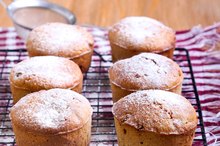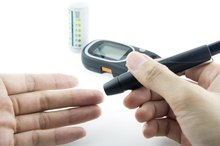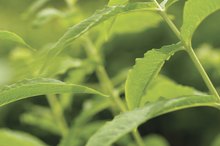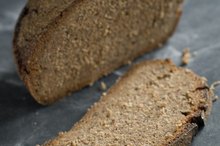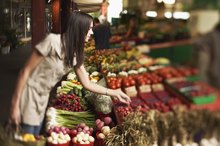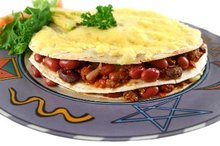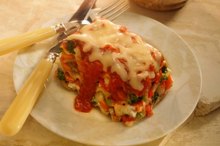Calories in a Slice of Whole-Grain Bread
Many brands of whole-grain bread have slightly different calorie counts, due to minor differences in each manufacturer's recipe. One standard, 26-gram slice of whole-grain bread contains 69 calories, according to the U.S. Department of Agriculture's National Nutrient Database for Standard Reference. A large, 41-gram slice has 109 calories.
If you are experiencing serious medical symptoms, seek emergency treatment immediately.
Calorie Breakdown
Of the 69 calories in one 26-gram slice of whole-grain bread, about 65 percent of them are from carbohydrates. About 20 percent of the calories come from the 3.5 grams of protein. Fat contributes 14 percent of the calories, with about 1 gram per slice. It is worth noting that a slice of whole-grain bread has almost 2 grams of fiber, whereas white bread has less than 1 gram of fiber per slice.
Related Articles
References
Writer Bio
Dakota Karratti has been writing fitness and health articles since 2010. Her work has appeared in the "Salisbury University Flyer" and "WomanScope NewsMagazine." Karratti has been a Certified Nursing Assistant in Delaware since 2008. She is currently enrolled in The University of Alabama's Nutrition and Food Science BS program.
